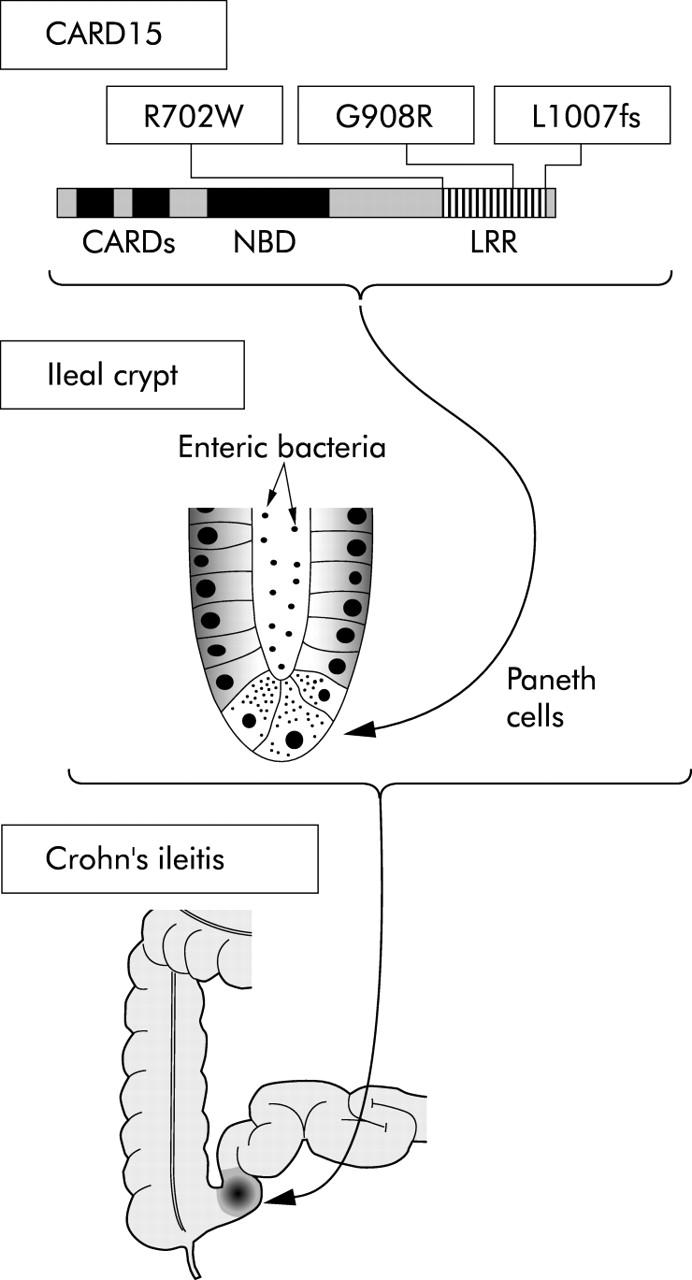Figure 2.

Three caspase activation and recruitment domain 15 (CARD15) variants (R702W, G908R, and L1007fs) within the leucine rich repeat (LRR) were initially described to genetically predispose to the development of Crohn’s disease.12 These variants are disease specific because they do not confer risk to other chronic inflammatory or autoimmune diseases.17,18 In the intestinal tract, CARD15 is primarily expressed in Paneth cells, which are critical in enteric antibacterial defence.28 In CARD15 mutant individuals, nuclear factor κB (NFκB) activation is reduced and thus the necessary antibacterial response, such as expression of defensins, does not occur.61,62 Chronic NFκB activation through alternative pathways is regarded as secondary to the lack of an appropriate antibacterial response.21 Paneth cells are most numerous in the terminal ileum and seem to be of local importance. A CARD15 deficit in Paneth cells, as present in homozygous or compound heterozygous mutants, is phenotypically related to Crohn’s ileitis. NBD, nucleotide binding domain.
